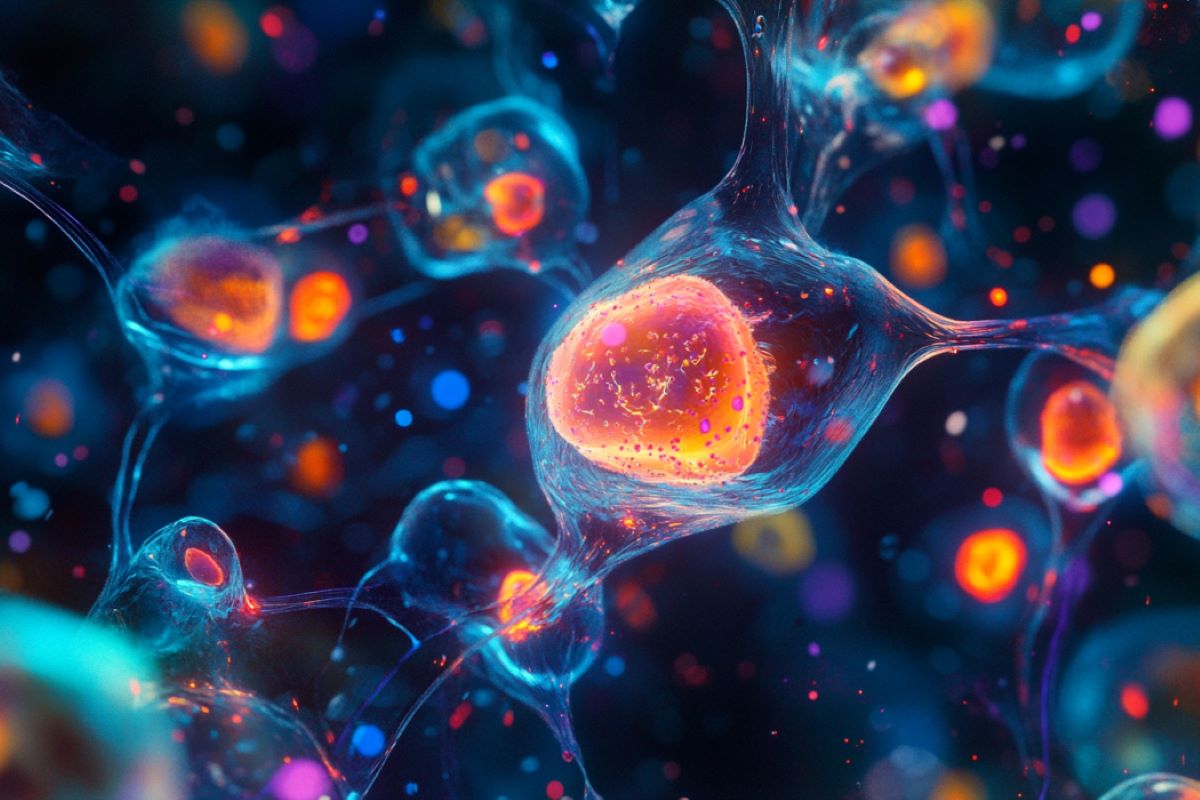Summary: A new study reveals that extracellular vesicles (EVs), tiny bubbles released by cells, play a crucial role in brain development by facilitating specialized cell-to-cell communication. These EVs carry proteins and transcription factors, influencing processes even at the nuclear level.
The research, which explored various brain cell types, highlights how EVs change their composition during brain growth, paving the way for future therapies targeting neurological diseases. These findings offer new insights into the complex dynamics of brain-cellular interactions.
Key Facts:
- Extracellular vesicles help cells exchange crucial signals during brain development.
- EVs can enter the nucleus of neural progenitor cells and induce gene changes.
- The composition of EVs varies among different brain cell types and regions.
Source: LMU
Extracellular vesicles (EVs) are tiny bubbles released by cells, acting as cargo vessels through which cells exchange signals and thus communicate.
A paper recently published in the journal Cell Reports has demonstrated that this form of cellular exchange also plays a key role in the development of the brain.
“Our findings underscore the central role of EVs in intercellular signaling during brain development, highlighting their potential as mediators of complex cellular interactions and as targets for future therapeutic strategies,” says lead investigator Dr. Silvia Cappello, research group leader at LMU’s Biomedical Center and member of the SyNergy Cluster of Excellence.

The team investigated extracellular vesicles in various model systems, including neural progenitor cells, neurons, astrocytes, brain organoids, and patterned spheroids, each derived from pluripotent stem cells.
In this way, the researchers obtained various new insights into how the little transport bubbles influence brain development.
Specific communication and dynamic protein composition
A key finding of the study is that extracellular vesicles facilitate specialized communication between different cell types.
“We demonstrated that recipient cells take up cargo from different donor cells, for which they have unique patterns of uptake,” explains Cappello.
This highlights the specificity of EV-mediated communication.
The researchers also discovered that the protein composition in the vesicles changes during brain development and varies among different cell populations and brain regions.
“This variability suggests a tightly regulated biogenesis of the EVs that is critical for their cell type-specific functions,” says Cappello.
Transport to cell nucleus
Using high-resolution live imaging techniques, the team was also able to show that extracellular vesicles enter the nucleus of neural progenitor cells during cell division.
“This finding is particularly exciting, as it indicates that EVs influence crucial cellular processes not only in the cytoplasm, but also at the nuclear level.”
As the study found, the transported cargo includes proteins, but also transcription factors, such as YAP1, that are directly transferred to recipient cells and induce rapid transcriptional changes. A particularly interesting example is the transcription factor YAP1, which is directly transported to the nucleus of recipient cells, where it induces transcriptional changes.
“This ability of extracellular vesicles to transport specific molecular signals to the cell nucleus opens up new perspectives for our understanding of complex cellular interactions in the brain,” says Cappello.
According to the authors, these findings underscore the central role of EVs in brain development and could pave the way for new therapeutic approaches for the treatment of neurological diseases in the long term.
About this neuroscience and neurodevelopment research news
Author: Dominic Anders
Source: LMU
Contact: Dominic Anders – LMU
Image: The image is credited to Neuroscience News
Original Research: Open access.
“Extracellular vesicle-mediated trafficking of molecular cues during human brain development” by Silvia Cappello et al. Cell Reports
Abstract
Extracellular vesicle-mediated trafficking of molecular cues during human brain development
Cellular crosstalk is an essential process influenced by numerous factors, including secreted vesicles that transfer nucleic acids, lipids, and proteins between cells.
Extracellular vesicles (EVs) have been the center of many studies focusing on neurodegenerative disorders, but whether EVs display cell-type-specific features for cellular crosstalk during neurodevelopment is unknown.
Here, using human-induced pluripotent stem cell-derived cerebral organoids, neural progenitors, neurons, and astrocytes, we identify heterogeneity in EV protein content and dynamics in a cell-type-specific and time-dependent manner.
Our results support the trafficking of key molecules via EVs in neurodevelopment, such as the transcription factor YAP1, and their localization to differing cell compartments depending on the EV recipient cell type.
This study sheds new light on the biology of EVs during human brain development.






